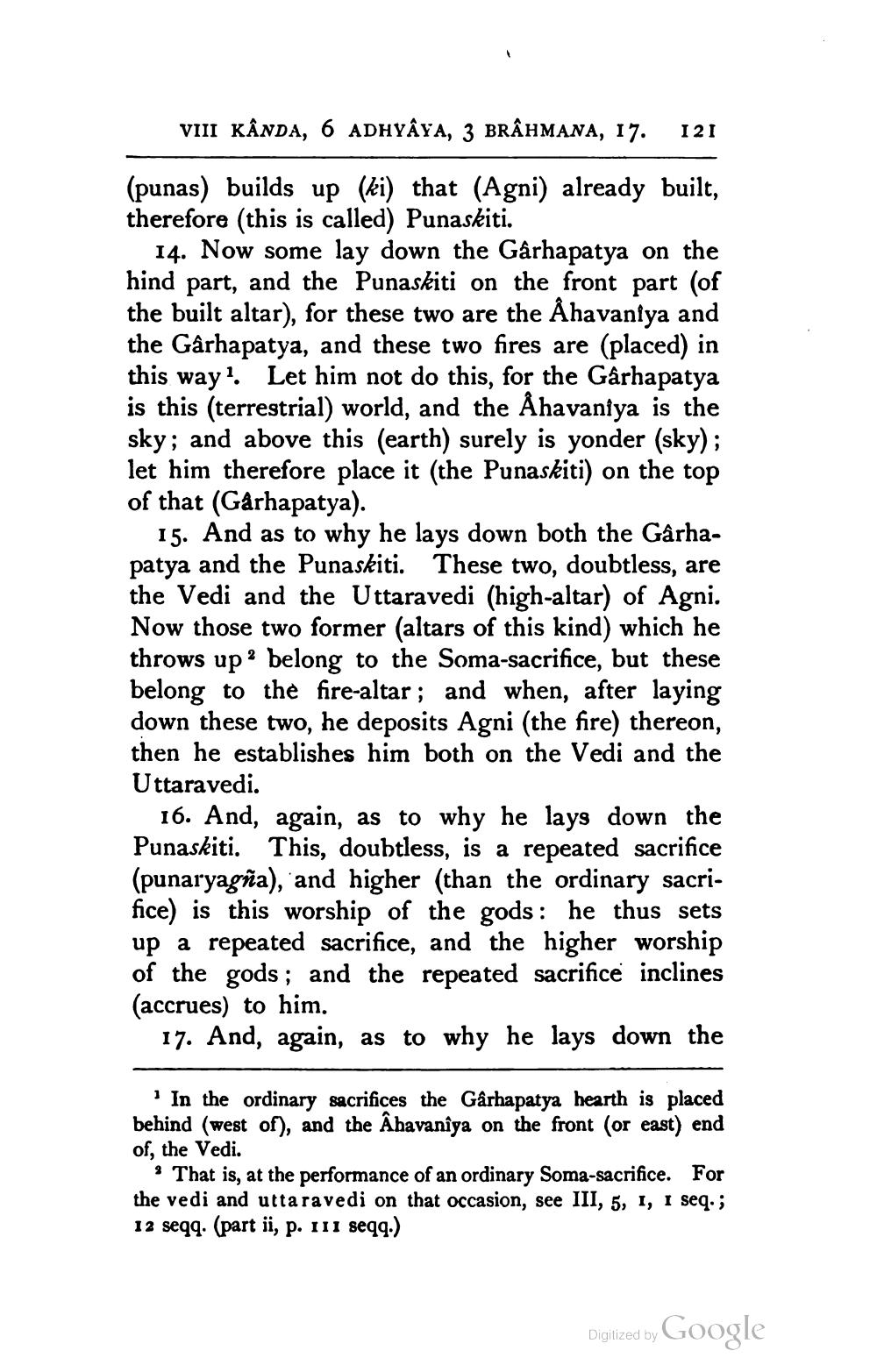________________
VIII KÂNDA, 6 ADHYAYA, 3 BRAHMANA, 17. 121
(punas) builds up (ki) that (Agni) already built, therefore (this is called) Punaskiti.
14. Now some lay down the Gârhapatya on the hind part, and the Punaskiti on the front part (of the built altar), for these two are the Âhavantya and the Gârhapatya, and these two fires are (placed) in this way1. Let him not do this, for the Gârhapatya is this (terrestrial) world, and the Åhavaniya is the sky; and above this (earth) surely is yonder (sky); let him therefore place it (the Punaskiti) on the top of that (Gårhapatya).
15. And as to why he lays down both the Gârhapatya and the Punaskiti. These two, doubtless, are the Vedi and the Uttaravedi (high-altar) of Agni. Now those two former (altars of this kind) which he throws up belong to the Soma-sacrifice, but these belong to the fire-altar; and when, after laying down these two, he deposits Agni (the fire) thereon, then he establishes him both on the Vedi and the Uttaravedi.
16. And, again, as to why he lays down the Punaskiti. This, doubtless, is a repeated sacrifice (punaryagña), and higher (than the ordinary sacrifice) is this worship of the gods: he thus sets up a repeated sacrifice, and the higher worship of the gods; and the repeated sacrifice inclines (accrues) to him.
17. And, again, as to why he lays down the
In the ordinary sacrifices the Gârhapatya hearth is placed behind (west of), and the Âhavanîya on the front (or east) end of, the Vedi.
"That is, at the performance of an ordinary Soma-sacrifice. For the vedi and uttaravedi on that occasion, see III, 5, I, I seq.; 12 seqq. (part ii, p. 111 seqq.)
Digitized by
Google




